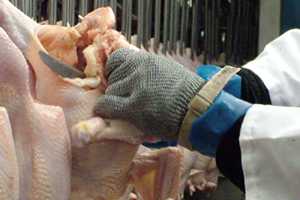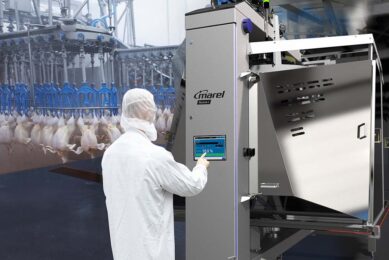Musculoskeletal disorders high in US poultry plant workers

A health-hazard evaluation of a South Carolina poultry processing plant conducted by the National Institute for Occupational Safety and Health (NIOSH) reveals “an alarming prevalence of carpal tunnel syndrome” among workers.
NIOSH researchers, who visited the plant three times in 2012 and 2013, determined that 42% of the employees who participated in the evaluation had evidence of carpal tunnel syndrome, and 41% worked in jobs involving hand activity and force above recommended limits for minimising risk of carpel tunnel syndrome.
NIOSH found that 57% of the participants reported at least one musculoskeletal symptom (not including hand or wrist symptoms) at both baseline and follow-up evaluations.
The agency notes that the plant’s recordable injury and illness rate was 1.3 times higher than the national averages for the poultry processing industry for 2009-2012. The most common work-related injuries were cuts, punctures and scrapes; repetitive motion; slips, trips and falls; and caught in, under or between.
NIOSH also found that between baseline and follow-up visits, the plant combined two evisceration lines, each operating at 90 birds per minute, into one line operating at 175 birds per minute. In making this change, the number of birds processed per minute by each worker did not change.
The agency states that the results of this evaluation may not reflect the increased prevalence of adverse health effects that might be experienced by workers in other plants that use different methods of increasing line speed. For example, increasing the number of birds processed per worker may result in an even higher prevalence of carpal tunnel syndrome than seen in this evaluation.
The final report makes recommendations to improve work conditions and minimise exposures to factors that increase the risk for musculoskeletal disorders and traumatic injuries. The recommendations address changes for reducing the amount of hand activity and force, changing work schedule and rotation patterns and policies, and improving work practices related to tool and equipment use.
Join 31,000+ subscribers
Subscribe to our newsletter to stay updated about all the need-to-know content in the poultry sector, three times a week. Beheer
Beheer








 WP Admin
WP Admin  Bewerk bericht
Bewerk bericht